Screen off the ugly stuff
Sheds, smelly bins, bicycle racks, compost heaps, trampolines and dog kennels are an inevitable part of most gardens but that doesn’t mean they have to be highly visible. Instead group them together in an out-of-the way corner where they can be conveniently hidden behind some ornamental trellis, fencing panels, bamboo or willow screens, hedging or a few large, container-grown, evergreen plants. Alternatively, create a living vertical screen using a mix of hardy climbers and/or specimen shrubs trained against a sturdy plant-support system of strong horizontal wires supported by a custom-made rigid metal frame. Make sure to provide safe, easy access to this utility area via a weatherproof garden path and some subtle outdoor lighting.
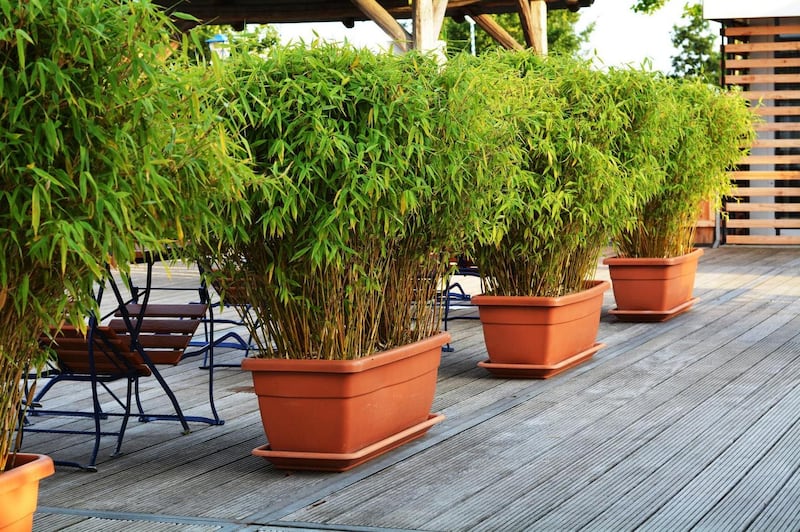
If you don't have space to screen off these kinds of utilitarian household items, then consider instead how they might be incorporated into your garden in more efficient, storage-clever ways. For example, the Austrian company Biohort does a very smart range of garden sheds, mini-garages, log sheds, bicycle stores, patio lockers and compost bins whose contemporary design suits the sleekest of urban gardens (howbertandmays.ie), while Ikea (ikea.ie) offers a range of outdoor storage boxes, shelving units and storage benches. Likewise, consider replacing that ugly rotary washing line with a retractable reel-type design that's much easier on the eye when not in use. Another clever trick used by garden designers to make ugly sheds, walls and fences visually recede is to paint them a moody shade of sooty grey, forest green or inky-blue and train hardy climbers or wall shrubs against them.
Create visual impact
Small groups of mean-sized pots dotted in a desultory fashion around the garden are never going to have anything like the charm and visual impact of a well-chosen display of generous-sized planters. Try to include at least one really outsized pot as the centrepiece of this display and choose a distinct theme or style in terms of the containers' shape, design and planting to help create an overall sense of cohesion. For example, ornamental grasses and architectural foliage plants grown in Corten steel, fibreglass or sleek concrete planters (stockists include howbertandmays.ie and caraghnurseries.ie) look right at home in a contemporary, urban space, while antique-style terracotta pots or vintage galvanised "dolly" tubs filled with a froth of pretty flowering perennials (penstemons, trailing campanula, perennial geraniums) suit more traditional, cottage garden-style gardens. Place these seasonal container displays in areas that you pass by frequently (for example, near a door or gate) or close to a favourite outdoor seating area.
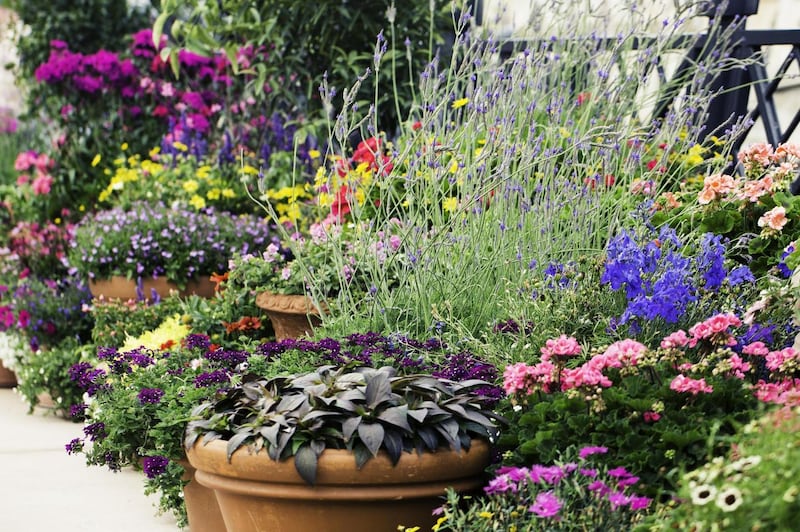
Think foliage
Summer flowers are so seductively beautiful it’s very easy to forget the all-important role foliage plays in softening any private outdoor space and giving it a sense of mystery and seclusion. It might be a wonderfully lush, container-grown bamboo, a hardy palm (Trachycarpus fortunei, Chamaerops humilis), Japanese acer or tree fern, a huddle of shade-loving heucheras, hellebores and epimediums, or a statuesque species of ornamental grass such as Stipa gigantea, Chionochloa rubra or Miscanthus sinensis. Just make sure to choose plants that suit the space in terms of the latter’s microclimate, aspect and growing conditions (shady or sunny, sheltered or exposed, hot or cool, etc).
Include some flowers
One of the quickest, easiest, most cost-effective ways to fill flowerbeds and pots with summer colour is by sowing some fast-growing flowering annuals. Pot marigolds, cosmos, dill, ammi, honeywort, malope, nicotiana and sunflowers are just some of many floriferous, pollinator-friendly varieties that can be easily raised from seed at this time of year.
A sculptural water bowl can add a magically serene quality to the smallest garden
For best results, sow seed under cover into trays or pots filled with a good-quality, damp seed compost. Seal these pots or trays inside transparent plastic bags or with clear plastic lids and place them in a bright, warm spot indoors. Once you spot obvious signs of germination, uncover them and prick the seedlings out into small, individual pots or cell-trays for planting into their permanent positions outdoors at the end of May or early June.
Decide on a colour theme
Ideally choose a colour scheme that complements the furniture and hard landscaping materials used in your garden (its built elements such as steps, paths, paving, fencing). As part of this, also consider any key views of the garden from your home’s windows and doors. By subtly repeating the use of one or two key colours throughout, you’ll create an overall sense of unity and harmony. Never underestimate the power of green which is the most soothing of colours in any garden as well as the colour that glues any planting scheme together. Conversely, bear in mind that vivid shades (orange, yellow, red) are invigorating and energising but should be used with caution.
Water feature
Love the idea of a water feature but not the faff and hassle of installing one? Then consider a sculptural water bowl which can add a magically serene quality to the smallest garden, acting as a reflective mirror to the sky while also supporting garden wildlife. Howbert & Mays in Dublin does a very handsome, custom-made Corten steel model in a variety of different sizes as does Kildare's Caragh Nurseries (caraghnurseries.ie). Alternatively, any sort of strong, waterproof container can be used as a water bowl, from carved granite basins to metal troughs or upcycled galvanised water tanks.
Tall plants
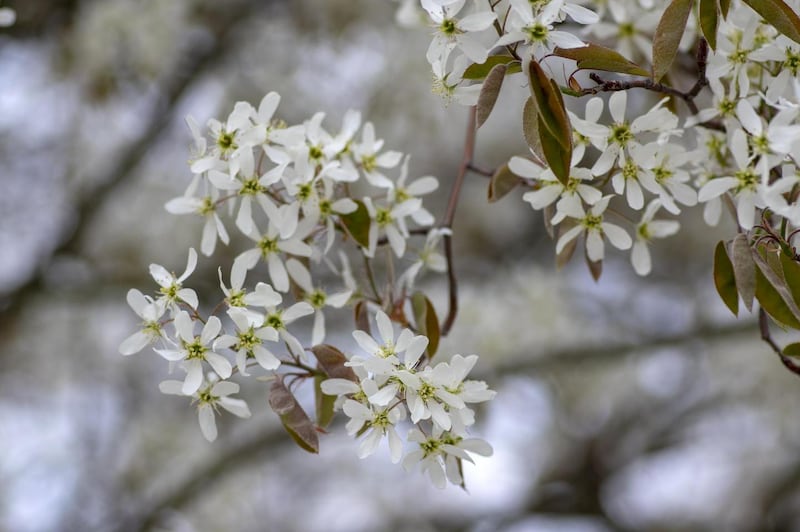
Don’t be afraid of tall plants which somehow have the ability to make any planting scheme look more confident and stylish. In particular, the addition of just one small tree or sculptural shrub can transform even the tiniest garden in amazing ways, acting as a focal point, providing seasonal interest, offering shelter and food for wildlife, creating privacy, muffling traffic noise and filtering air pollution while simultaneously screening ugly views. Suitable varieties include the snowy mespil (Amelanchier lamarckii); star magnolia (Magnolia stellata) and Japanese apricot (Prunus mume ‘Beni-chidori’), all of which can also be grown in outsized containers. Also consider growing a couple of tall, handsome evergreen specimen plants in large planters fitted with sturdy castors so that they can be moved around as required. Suitable choices include clump-forming bamboos and the ultra-hardy Phillyrea latifolia which can be artfully pruned and/or crown-lifted to keep it compact enough to grow in a container.
Cast a critical eye over any garden furniture
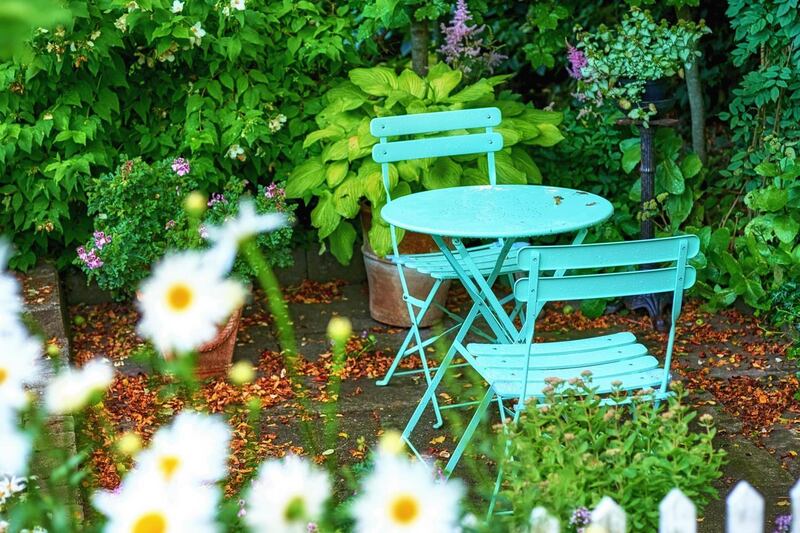
Could it be given a new lease of life with a fresh coat of paint or would it be a whole lot better to replace garden furniture with a few well-designed classic pieces? If the latter, then bear in mind that smaller outdoor spaces can easily feel cluttered so try to choose airy, graceful designs that allow light to flood in. Examples include the Saltholmen foldable range from Ikea, which is ideal for small balcony spaces; Fermob's elegant Luxembourg armchair and Montmartre table (formalityonline.com) and the compact Italian "Flower" range from Ethimo (howbertandmays.ie).
This Week in the Garden
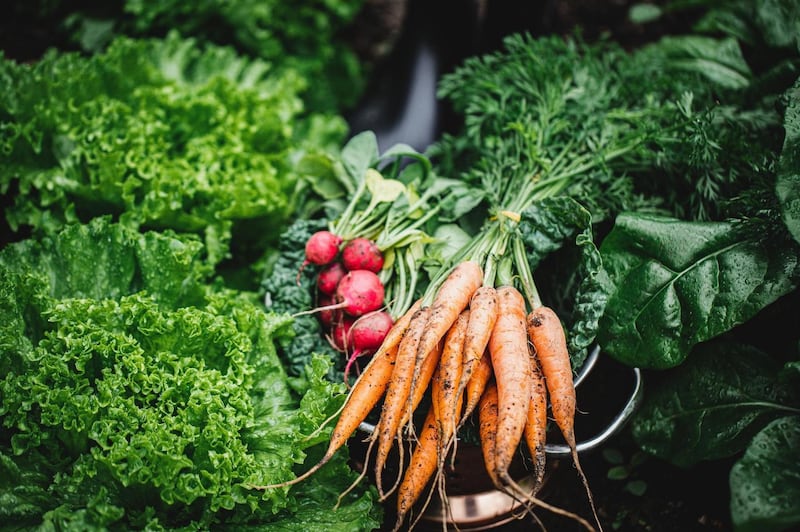
Early May is a good time to direct-sow seed of spinach, chard, radishes, parsnips, early beetroot, early carrots, peas, turnips and runner beans in the garden or allotment. Always prepare the ground well in advance, making sure it’s free of weeds and hoed or raked to a nice, crumbly tilth. If it’s dry, give it a gentle watering before sowing. Hold off working the soil if it’s very wet and cold to avoid damaging it and avoid sowing seed on very windy days as otherwise it could be accidentally blown away. To encourage good germination, it’s also well worth gently covering drills/patches of recently sown seed with a layer of horticultural fleece.
In colder parts of the country, late spring frosts can do serious damage to the blossom of fruit trees and fruit bushes, inhibiting or preventing fruit from setting with the result that the whole year’s harvest can sometimes be lost. So on any nights when harsh frosts are forecast it’s a good idea where possible to cover the blossom. But make sure to remove it in the morning to allow pollinating insects to visit the flowers (without pollination, there will be no fruit).



















